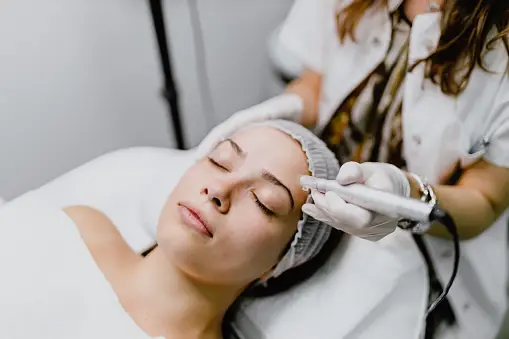Microneedling, a cosmetic procedure involving tiny needles to create micro-injuries on the skin, can offer benefits such as improved skin texture and reduced scars. However, there are several potential problems and side effects associated with it:
- Skin Irritation and Redness: After the procedure, it’s common to experience redness, irritation, and swelling in the treated area. This typically subsides within a few days but can be uncomfortable.
- Infection: Since microneedling creates small punctures in the skin, there’s a risk of infection if the needles or the skin are not properly sterilized. Proper aftercare is crucial to prevent this.
- Scarring: Improper technique or using needles that are too long can cause scarring, especially in individuals prone to keloids or hypertrophic scars.
- Hyperpigmentation: Some people, particularly those with darker skin tones, may experience hyperpigmentation or dark spots after the procedure. This can be exacerbated by sun exposure during the healing period.
- Allergic Reactions: Reactions to numbing creams or serums used during the procedure can occur, leading to irritation or more severe allergic responses.
- Pain and Discomfort: Even with numbing agents, some individuals may find the procedure painful or uncomfortable.
- Delayed Healing: Some individuals may experience delayed healing or prolonged redness and swelling, especially those with sensitive skin or certain medical conditions.
- Temporary Bruising: Bruising can occur, particularly if the microneedling is done near delicate areas such as around the eyes.
- Inflammatory Skin Conditions: People with active skin conditions like eczema, psoriasis, or active acne may experience a worsening of their condition.
- Herpes Simplex Reactivation: Individuals with a history of cold sores might experience a reactivation of the herpes simplex virus due to the skin trauma.
- Ineffective Results: Not all skin issues respond well to microneedling, and some people may not see the desired improvement.
- Professional Variability: The skill and experience of the practitioner can greatly impact the results and risk of complications. It’s important to choose a qualified and experienced provider.
- Cost and Time: Multiple sessions are often required to achieve the desired results, which can be time-consuming and expensive.
Individuals considering microneedling should consult with a qualified dermatologist or skincare professional to discuss the potential risks and benefits based on their specific skin type and condition. Proper pre- and post-care instructions should be followed to minimize adverse effects.

What are the mistakes in microneedling?
Mistakes in microneedling can lead to various complications and suboptimal results. Here are some common mistakes:
- Improper Sterilization: Using non-sterile needles or not properly sterilizing the skin before the procedure can lead to infections.
- Incorrect Needle Length: Using needles that are too long or too short can cause inadequate results or excessive damage to the skin, respectively.
- Excessive Pressure: Applying too much pressure during the procedure can lead to deeper skin damage, bruising, and increased risk of scarring.
- Inadequate Skin Preparation: Failing to properly cleanse and prepare the skin before microneedling can increase the risk of infection and reduce the effectiveness of the treatment.
- Over-Treating the Skin: Performing microneedling too frequently or over-treating the same area can lead to skin irritation, prolonged healing times, and potential scarring.
- Improper Technique: Not following the correct technique, such as inconsistent needle depth or incorrect motion, can lead to uneven results and skin damage.
- Ignoring Skin Conditions: Microneedling over active acne, rosacea, eczema, or other inflammatory skin conditions can exacerbate these issues.
- Insufficient Aftercare: Not following proper aftercare protocols, such as avoiding sun exposure and using recommended skincare products, can result in complications like hyperpigmentation and infections.
- Allergic Reactions to Products: Using skincare products that contain allergens or irritants immediately after microneedling can cause adverse reactions.
- Inappropriate Candidates: Performing microneedling on individuals who are not suitable candidates, such as those with certain skin conditions, bleeding disorders, or a history of keloid scarring, can lead to serious complications.
- Not Consulting a Professional: Attempting DIY microneedling without proper training or not consulting a professional can increase the risk of making these mistakes.
- Using Old or Damaged Devices: Using microneedling devices that are worn out or damaged can result in uneven needle penetration and increased risk of skin damage.
- Skipping Patch Test: Failing to perform a patch test to check for potential allergic reactions to numbing creams or serums used during the procedure can lead to unexpected skin reactions.
To minimize these mistakes, it is crucial to have microneedling performed by a qualified and experienced professional who follows strict hygiene and procedural protocols. Proper aftercare and following professional advice are essential for achieving the best results and minimizing risks.
